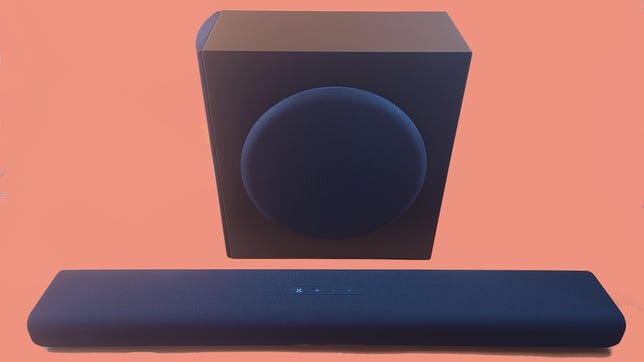
Pros
- Excellent music and movie replay
- High-quality Atmos simulation
- Subwoofer offers deep, controlled bass
Cons
- No wi-fi streaming
- Not ‘true’ Dolby Atmos
When you’re buying AV equipment you want to make sure it’s not going to be instantly outdated. There’s so many different buzzwords out there — spatial audio, WiSA, eARC — and yet there is one phrase that still looms large in people’s minds: Dolby Atmos. The $399 Yamaha SR-B40A is a 2.1-channel soundbar which can decode Atmos in a convincing way, features a large subwoofer for extra oomph and has a Bluetooth connection for streaming your content.
The electronics industry may thrive on buzzwords and ever bigger numbers — more power! more channels! more features! — but one thing that will always matter is performance. The Yamaha SR-B40A may not tick every box on the features checklist, but it sounds better than many soundbars that can. And that’s worth paying for.
What it is
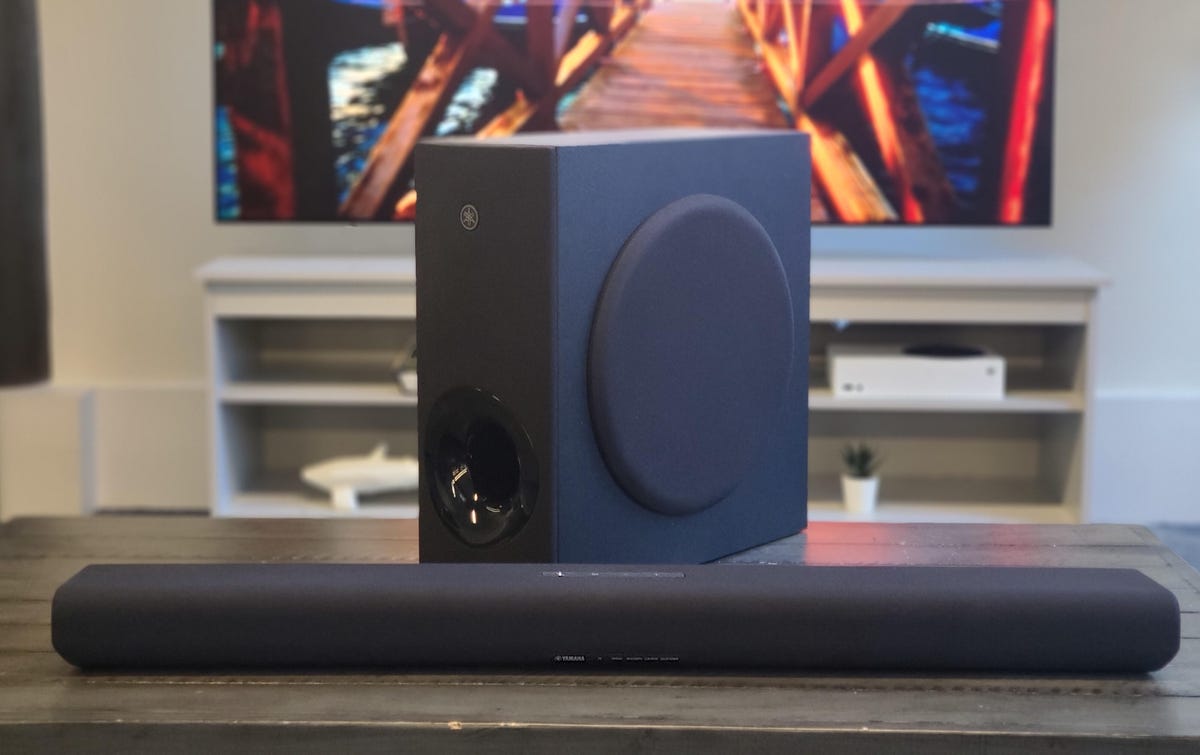
Soundbars are ugly. So it is written. While some models like the Klipsch Cinema 400 — with its wooden box and exposed tweeters — are designed to grab our attention, most soundbars opt for a plastic construction and yards of gray cloth. The Yamaha SR-B40A keeps with convention with a 35.85-inch wide box, draped in gray, which is 2.6 inches tall and 5.25 inches deep. There is one faint concession to “design” with a burnished-looking power button. Despite the presence of Dolby Atmos processing, this is a 2.1 soundbar, and the main unit features four 1.8-inch drivers in stereo, plus two 1-inch dome tweeters.
One reason to buy a soundbar like the SR-B40A is for its subwoofer — its larger size affords a better performance in music and movies, specifically. The wireless sub features a 6.5-inch driver, which is large for this kind of soundbar. The cabinet measures 7.6 inches wide and roughly 16 inches square.
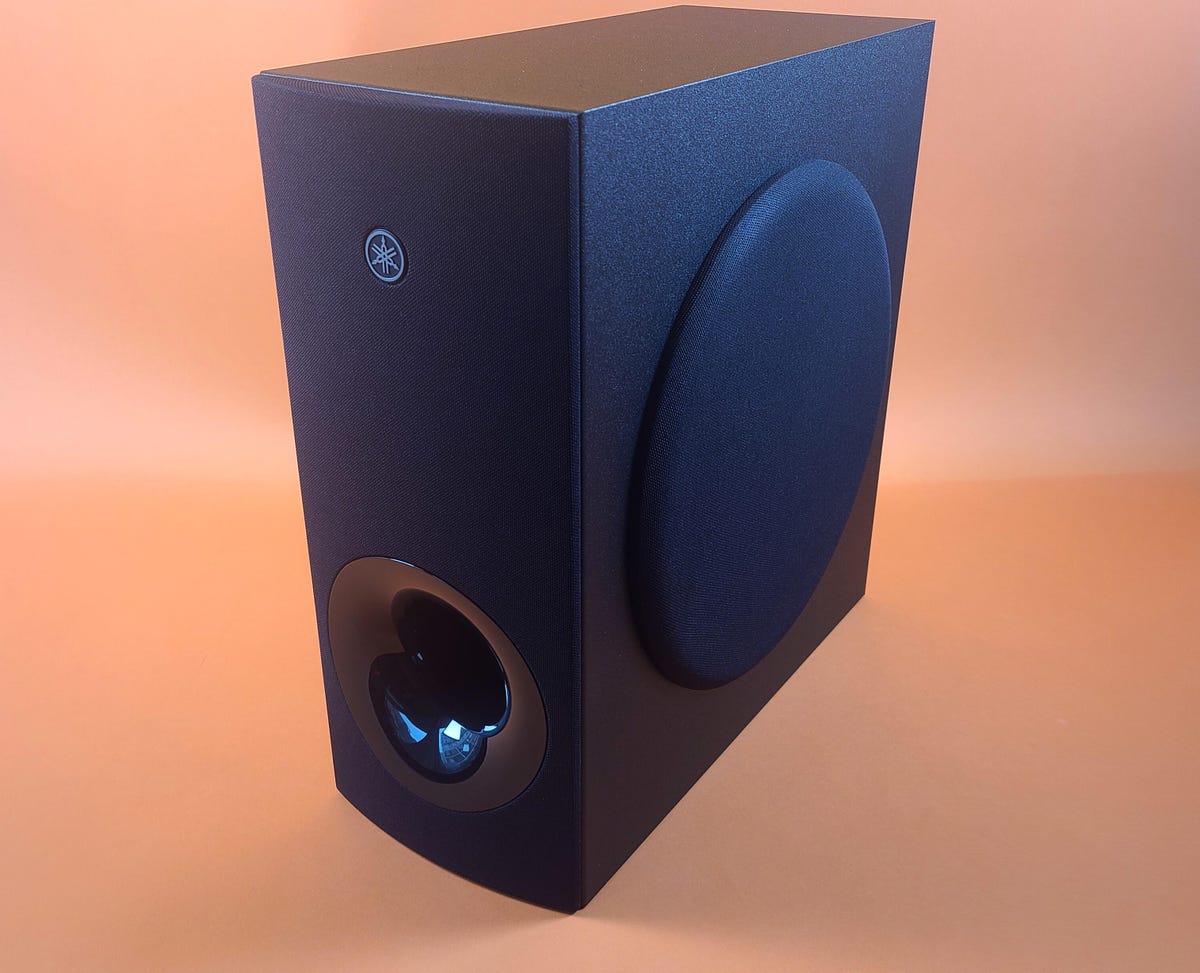
In the 1980s and ’90s, Yamaha pioneered the use of extended sound modes with its AV receivers, and the SR-B40A does offer a number of different options. Though you won’t find “Hall in Vienna” here, you’ll still get enough to cover most types of content including: Stereo, Standard, Movie, Game and Bass Extended. The soundbar also includes the Clear Voice mode for making movie dialogue more understandable. It’s worth noting that while the bar is Dolby Atmos compatible it can’t decode DTS, and it uses the company’s own proprietary True Sound to generate spatial effects.
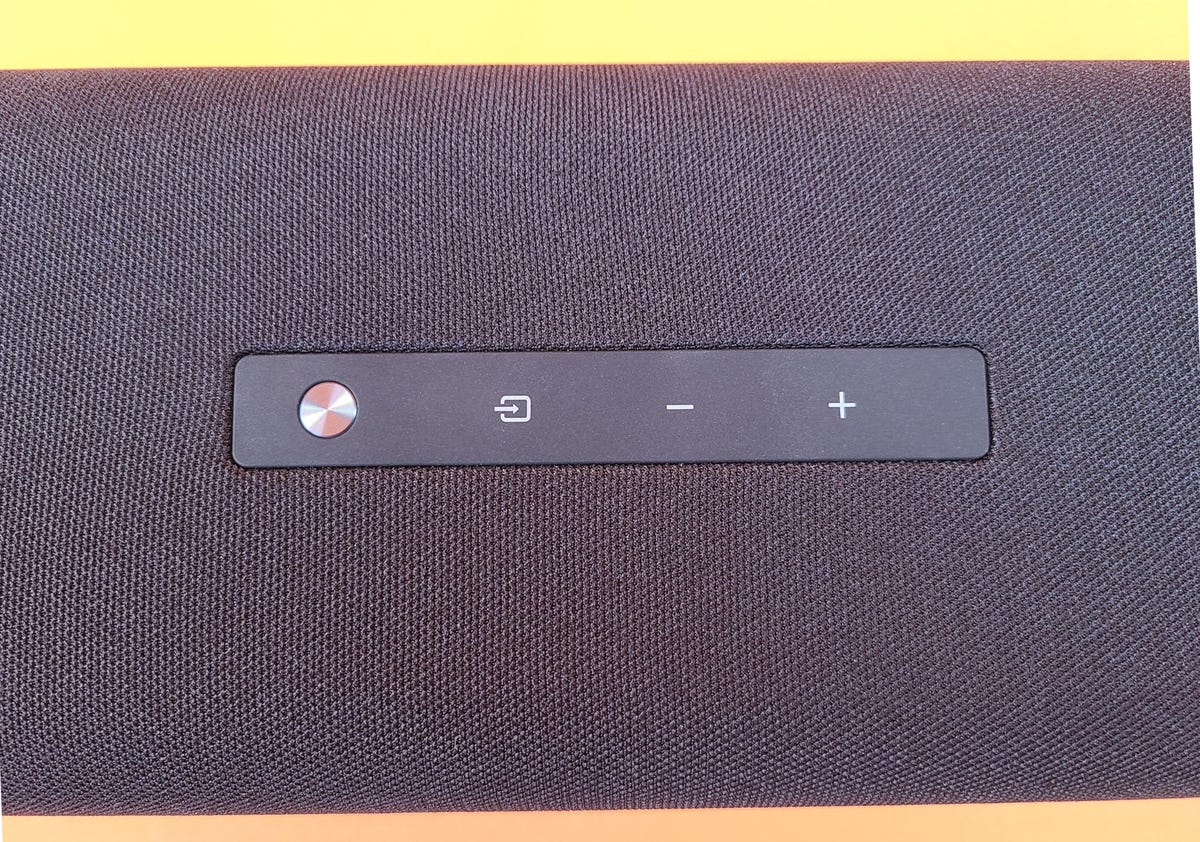
Given the price I would have anticipated more connections than are on offer — no analog input, no Wi-Fi — though the SR-B40A includes digital optical, HDMI and Bluetooth 5.1. Sadly, the SR-B40 lacks the 203’s killer feature — online streaming (plus Amazon Alexa). While it’s easy to replace an onboard voice assistant with an affordable smart speaker, there’s no substitute for Spotify Connect. The B40A does have Bluetooth, but this method is prone to disruption (“ding ding!”) or the music can simply cut out if you move out of range.
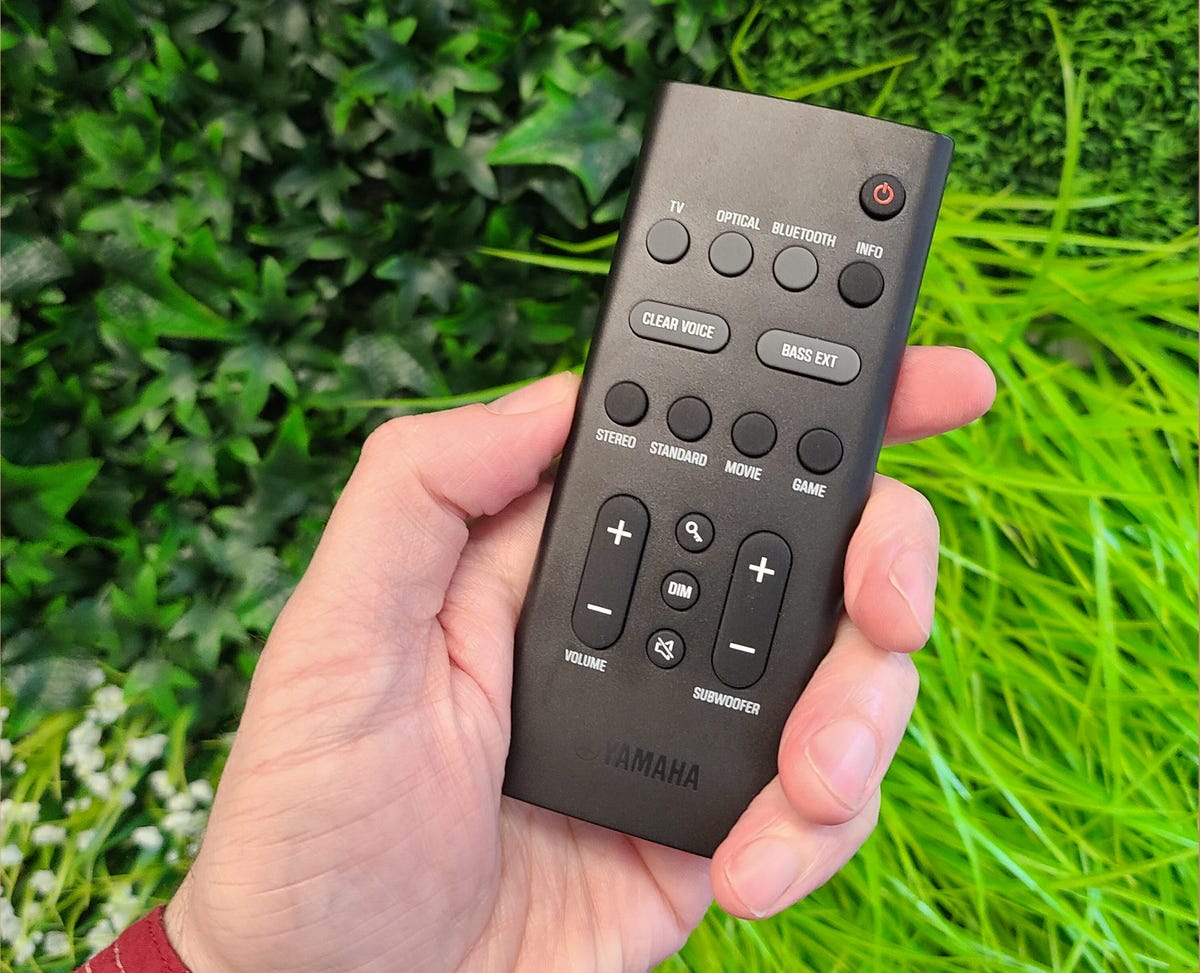
Lastly, the Yamaha features a credit card-size remote that includes all of the functionality you need. Unless you switch between music and movie mode a lot, you can ditch it for your TV remote.
Performance
While you should take the SR-B40A’s Dolby Atmos compatibility with a grain of salt, I did find the Yamaha was capable of convincing height effects in movies. The large subwoofer was also able to provide the low-end punch you just can’t get from cheaper soundbars, and I found this was especially effective with music.
I pitted the Yamaha against the similar Polk S4, which I had previously found to be a very versatile soundbar. The main difference between the two products is that the Polk has a much smaller sub, and the difference in performance was quickly noticeable.
I started with the movie which has generated the most Oscar-buzz from 2023 — Oppenheimer — and it’s great for its dynamic punch and mumbly Christopher Nolan dialogue. Naturally, I skipped a few scenes to cut to the chase — the final test of the Manhattan Project. The scene begins in silence as it alternates between the ballooning of the mushroom cloud and the scientists watching nervously. The Polk was able to deliver Oppenheinmer’s infamous line “Now I am become death, the destroyer of worlds” with greater clarity than the Yamaha. Some of the background noise — papers shuffling was also more discernible. Yet, it was here that the Yamaha’s sub truly came into play. At 1:57, a character is thrown by the force of the blast, and through the Yamaha it was the first time I’ve seen and heard a force actually pushing him. This wasn’t felt on the Polk, and its sub didn’t seem to have the grunt or latent power of the Yamaha’s.
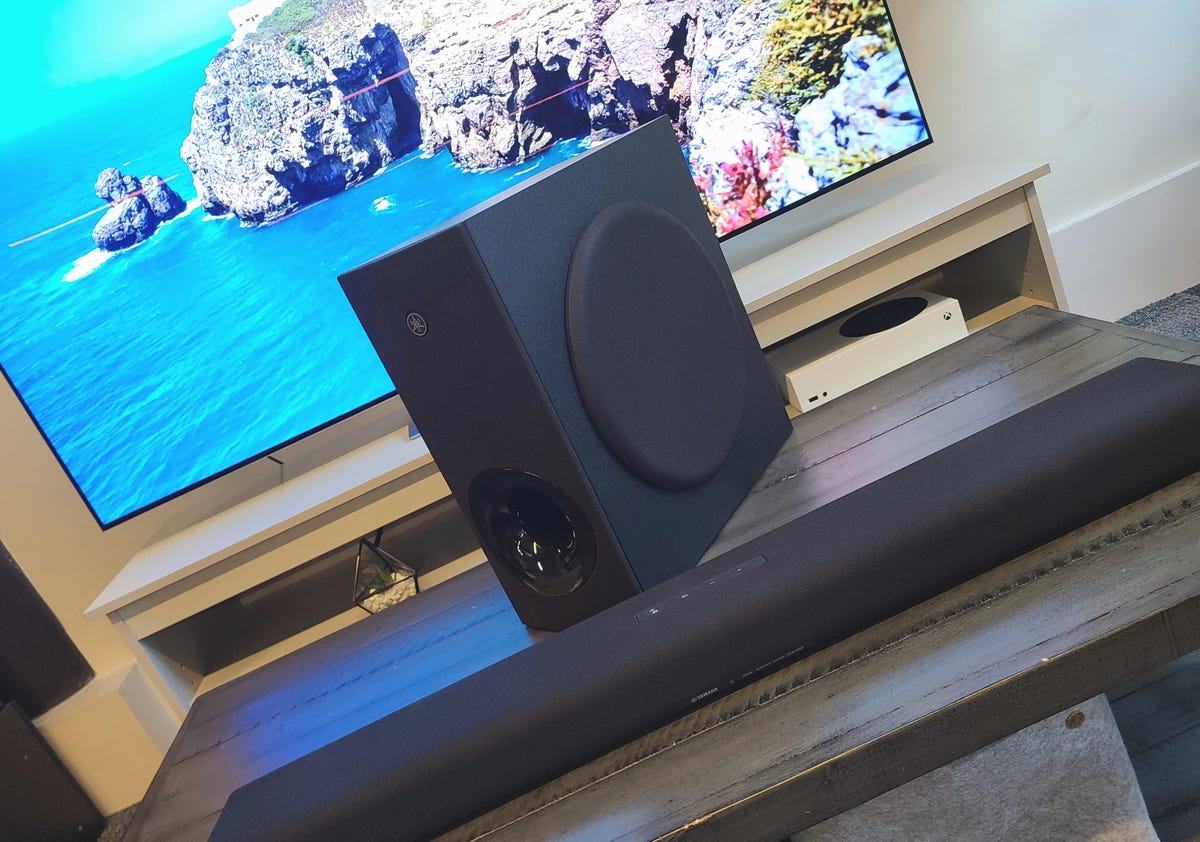
With the opening scene of Mad Max: Fury Road, both the Polk and the Yamaha were able to deliver a convincing sense of height — making the disembodied voices of the intro zip around the room. While the Polk made the room seem bigger, the Yamaha displayed more brute force and the voices were more focused.
I also listened to Batman Begins to test both soundbars’ voice modes and found that the Yamaha was the most natural sounding. It was able to maintain bass effects while keeping the dialogue intelligible Though the Polk has three different levels these got progressively less listenable and synthetic. People with hearing difficulties may still prefer this level of fine-tuning, however.
On to stereo replay, and the two soundbars were evenly matched with most kinds of music, but it was with bass heavy tunes that the Yamaha was most at home. Gorillaz’s Feel Good Inc is where the Yamaha finally pulled away from the Polk. The SR-B40A is the soundbar if you like loud, bass-driven music. It played the song with an authority the Polk couldn’t touch and with deep, punchy bass. The Polk sounded more lopsided with this song with vocals that were so far forward as to be nasally.
Should you buy it?
The number of soundbars under $500 that can play “native” Dolby Atmos can still be counted on one hand, and while the Yamaha SR-B40 can’t be included on this list, it sounds great anyway.
While the company hasn’t yet offered anything to replace the fantastic YAS-203, the SR-B40A comes closest, and the soundbar certainly has the original’s gift for performance. If you’re looking for a TV speaker which delivers both sparklingly clear dialog and muscular music replay, then the Yamaha SR-B40A is one to consider.



